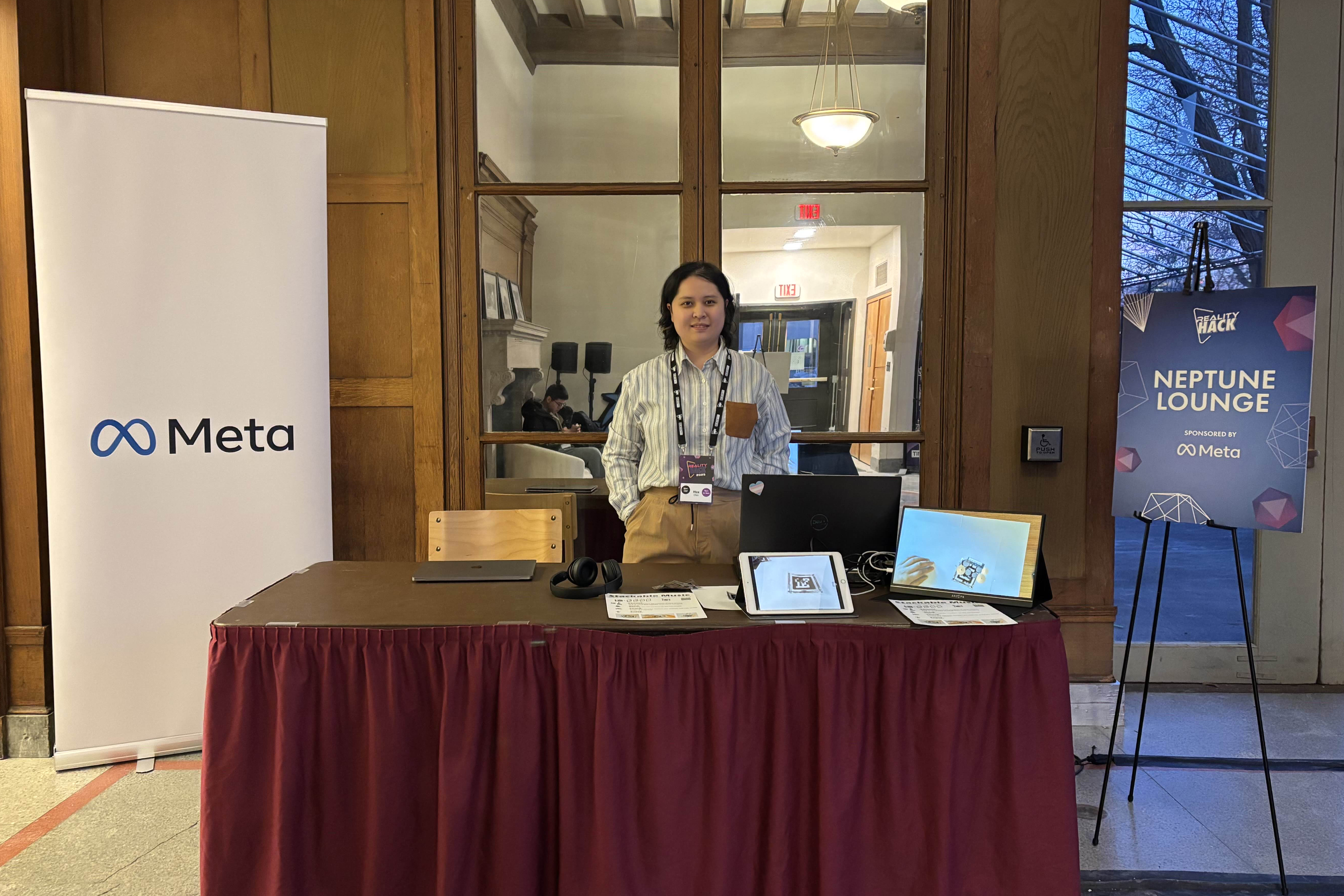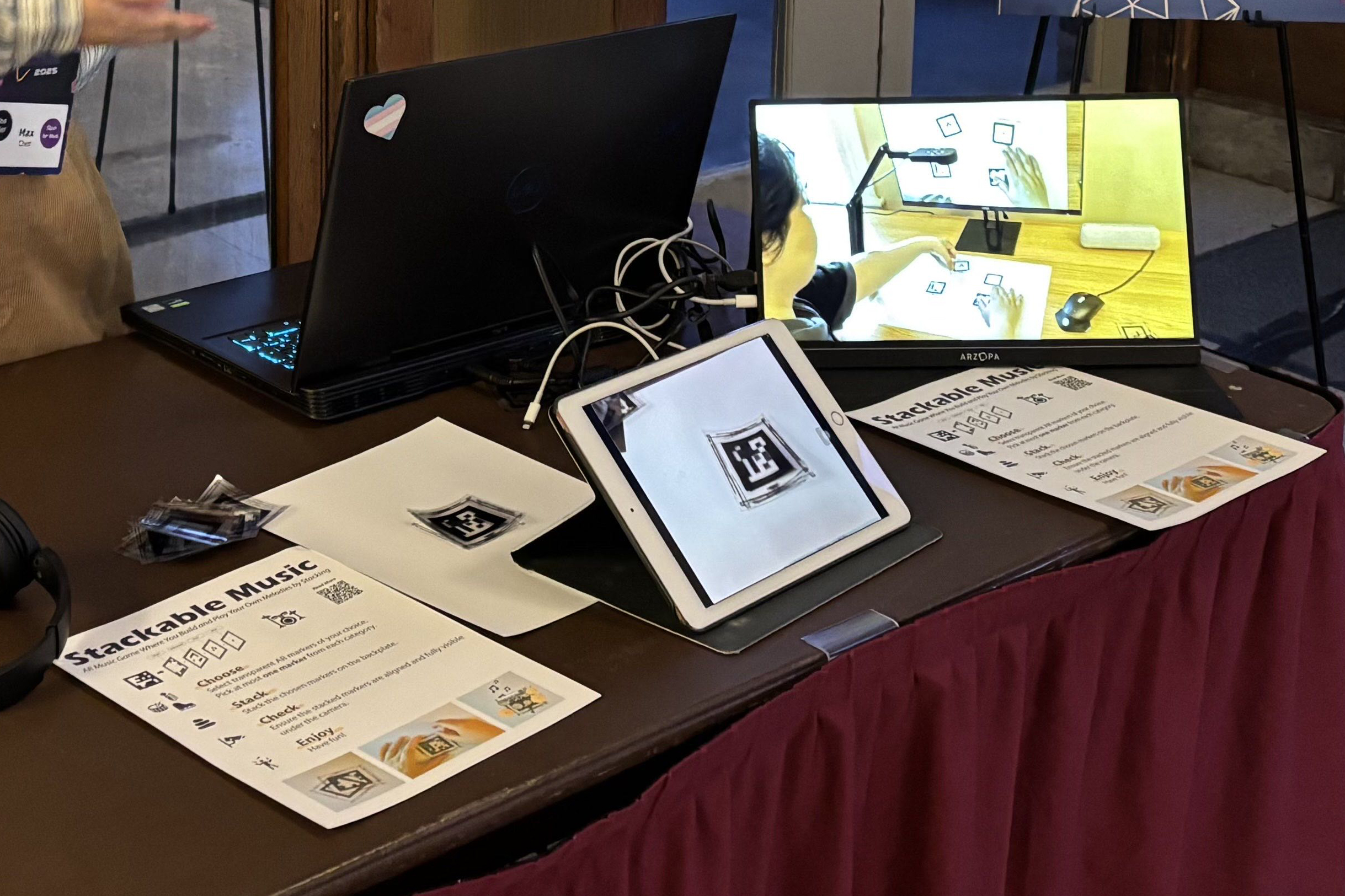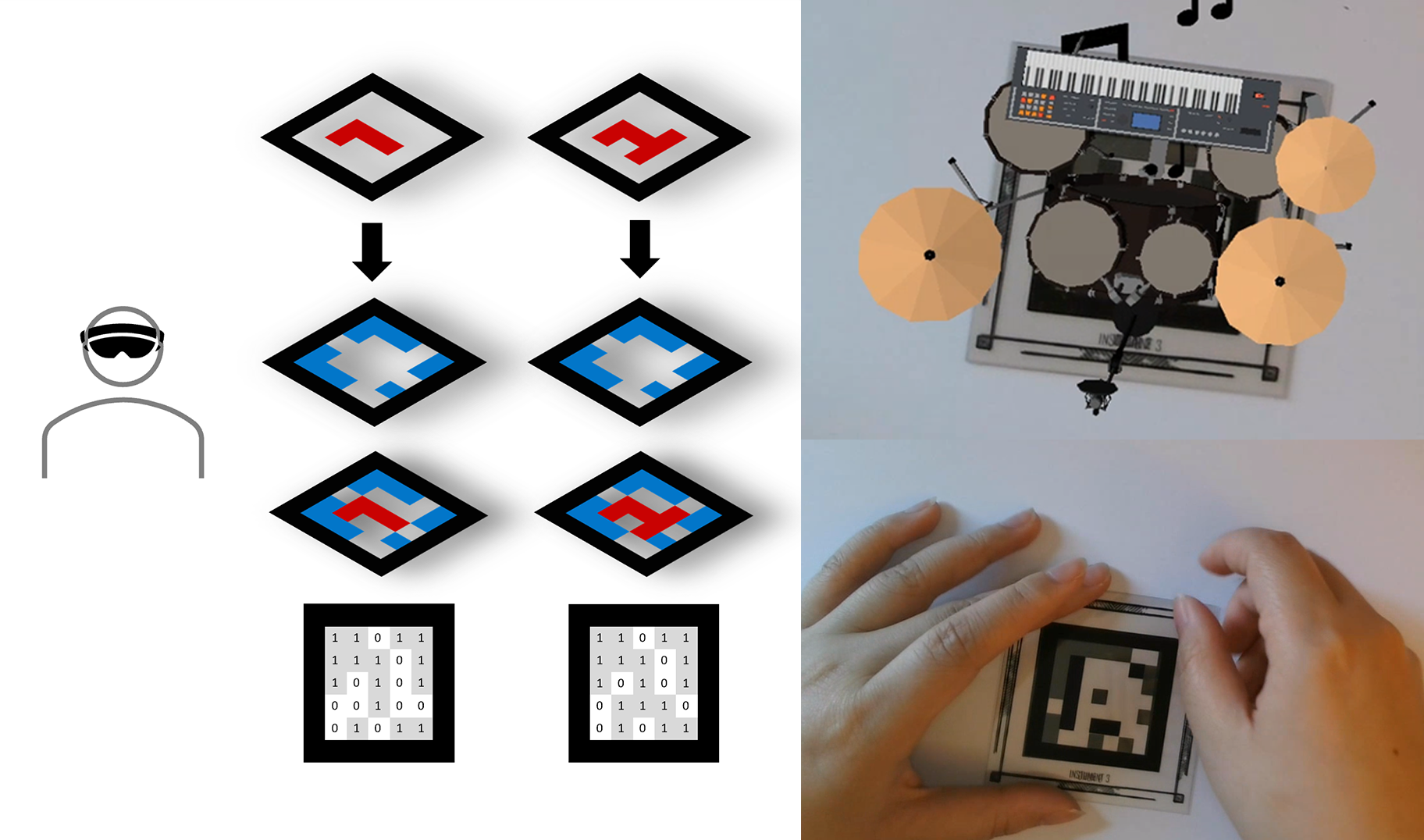Transparent AR Markers
A novel AR system using stacked transparent markers as a tangible, compositional input method.
Year Active: 2023
We explored the affordances that transparent PVC films offer for tangible interactions. Stack AR introduces a novel alternative input method for augmented reality: stacking transparent fiducial markers as a tangible, compositional interface. Unlike traditional AR systems that rely on single, opaque markers or touchscreens, Stack AR enables the computer system to recognize the combination of layers. I made a music synthesis game Stackable Music, to showcase how it can be used in AR games.
If you are interested in the technical details, please read (Chen et al., 2023).
Technical Highlight
-
Custom ArUco Marker Library
A bespoke ArUco dictionary was created to support marker stacking on transparent film, minimizing interference and ensuring that stacked combinations generate unique, detectable codes. Marker regions are designed in concentric “rings,” allowing selective stacking and clear layer separation. -
Computer Vision Integration in Unity
The Unity application employs the OpenCV for Unity plugin to enable real-time marker recognition and pose estimation from a top-down camera. Custom logic parses the detected markers, identifies their combination, and maps them to distinct musical or visual elements in the AR environment. -
Detection and Interactive Synthesis
By precomputing all viable marker combinations, Stack AR can identify both individual and stacked markers in a single frame, triggering the correct set of audio, 3D models, and particle effects. The system is resilient to partial occlusion, variable lighting, and the material challenges of transparent.
Presentation
Stack AR was selected for presentation at the MIT Reality Hack 2025 (Jan 23–27) as part of an art grant. The project can be easily set up with a desktop, camera, and printed transparent markers.


